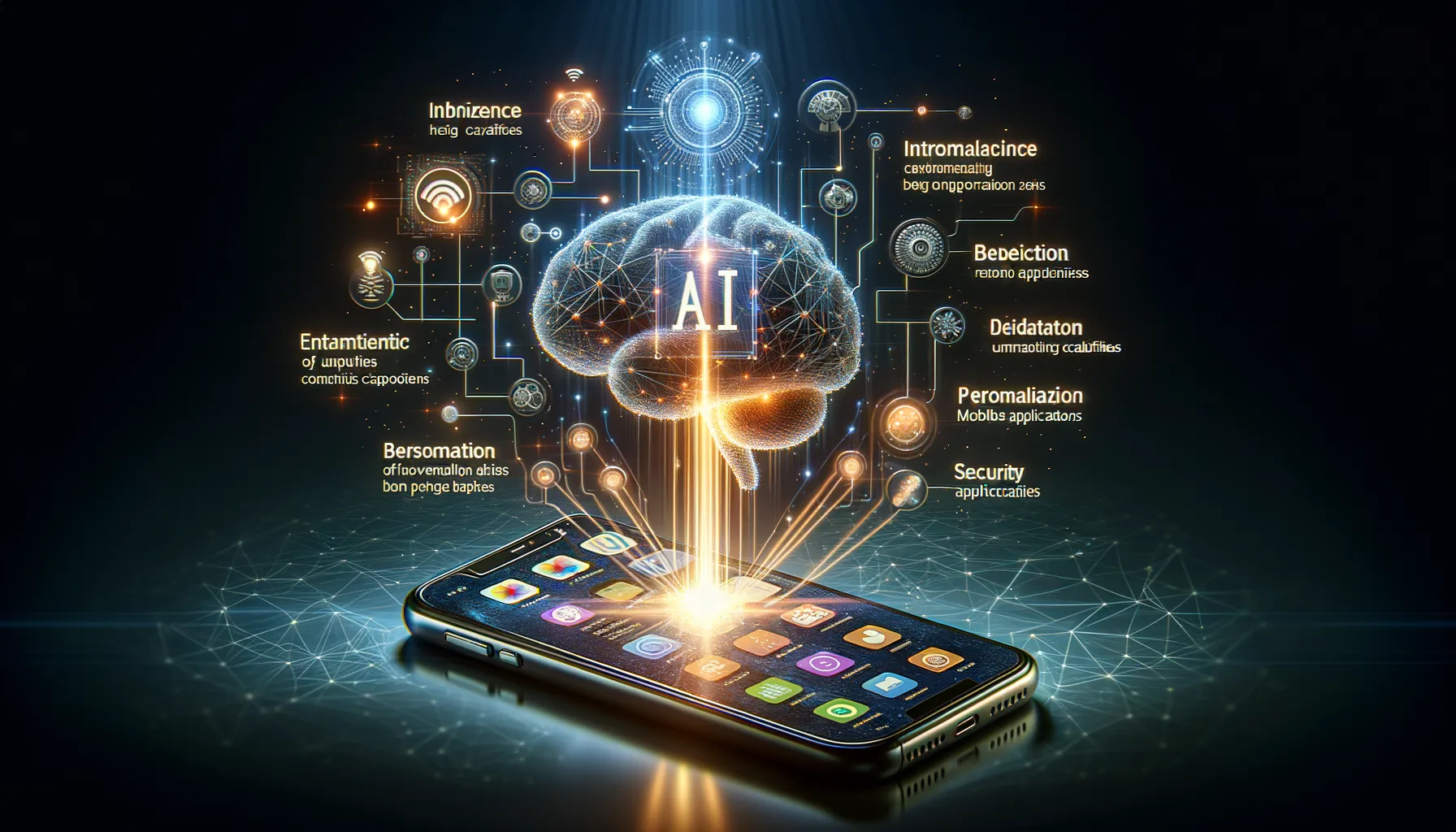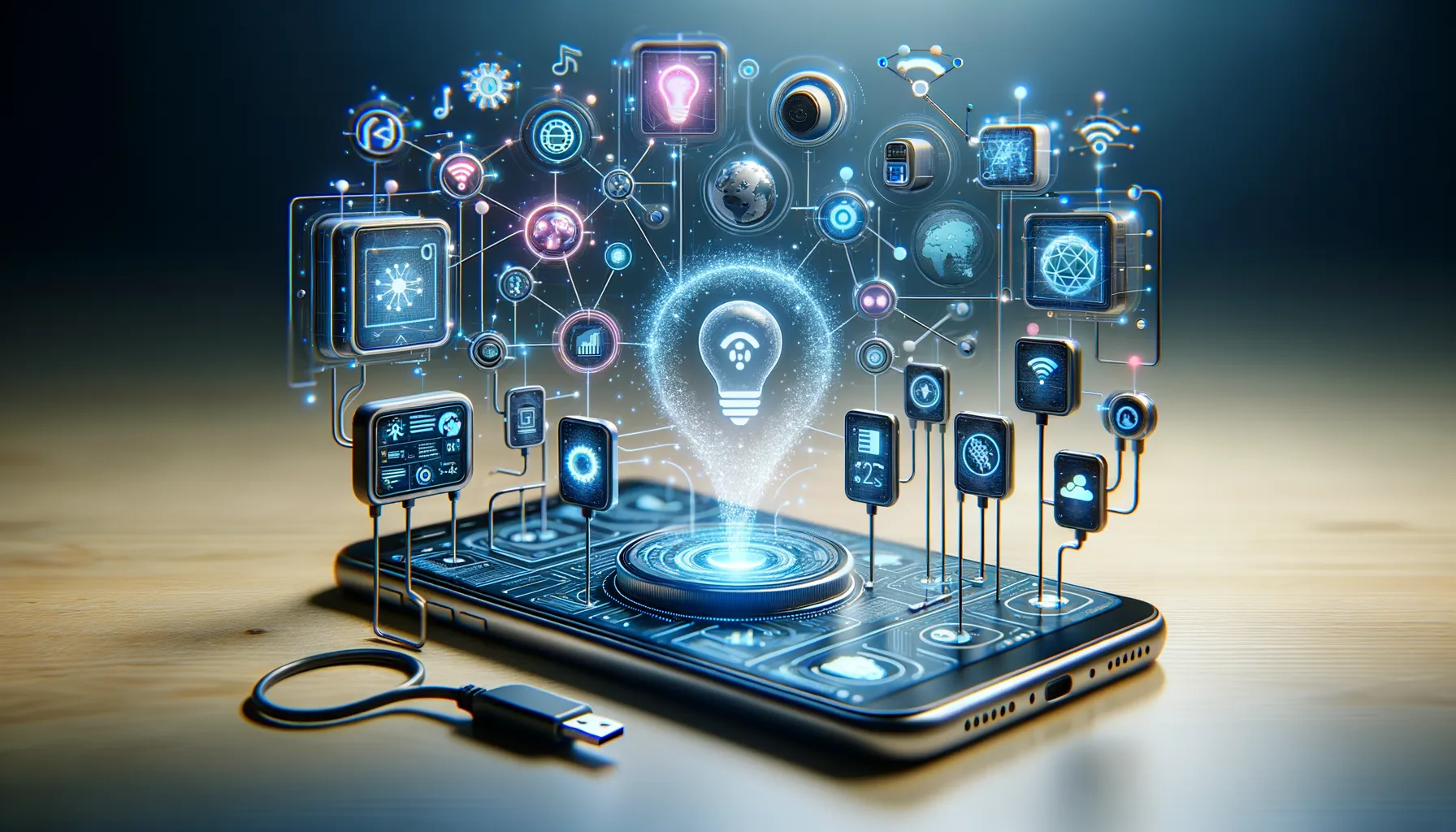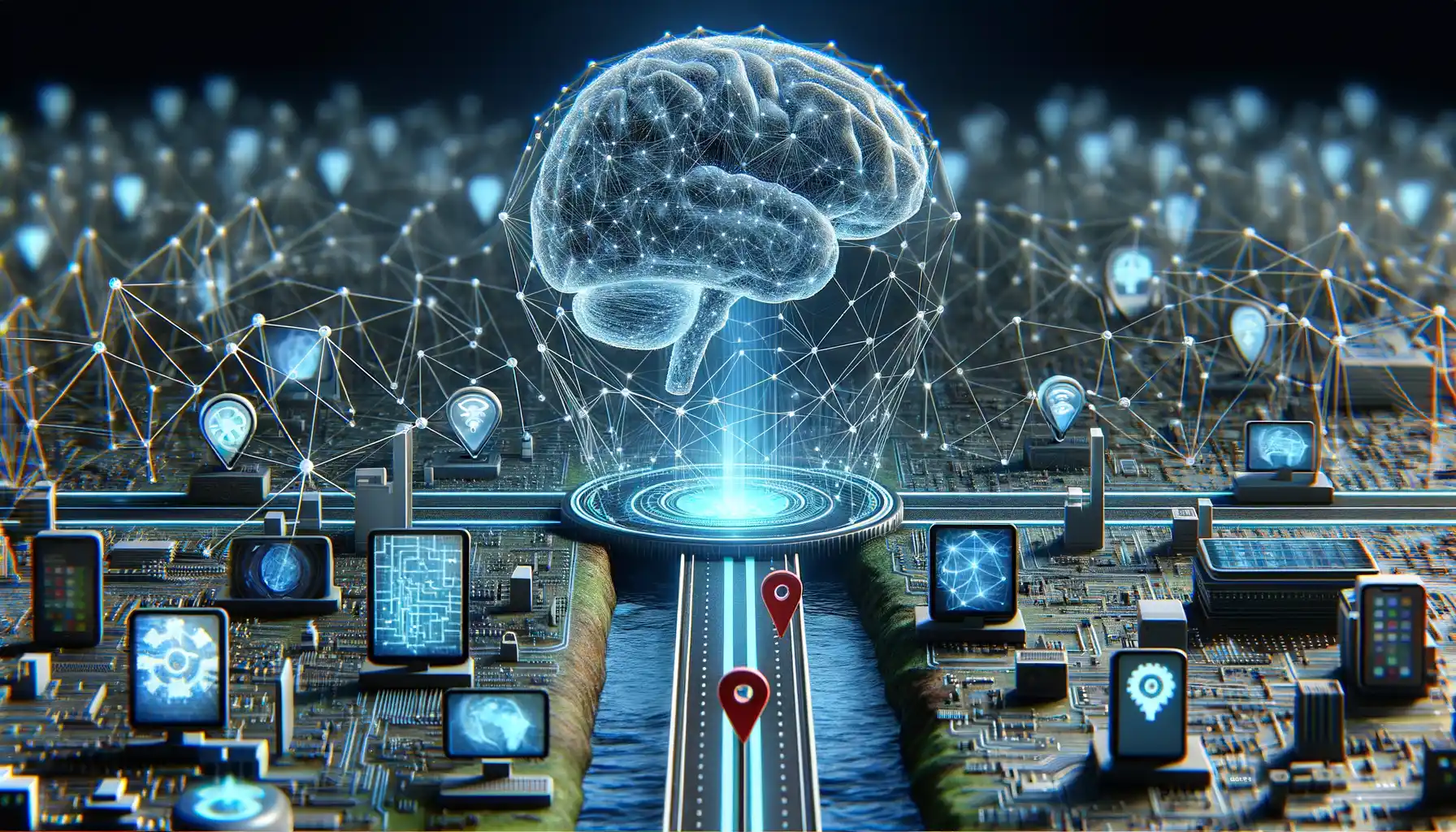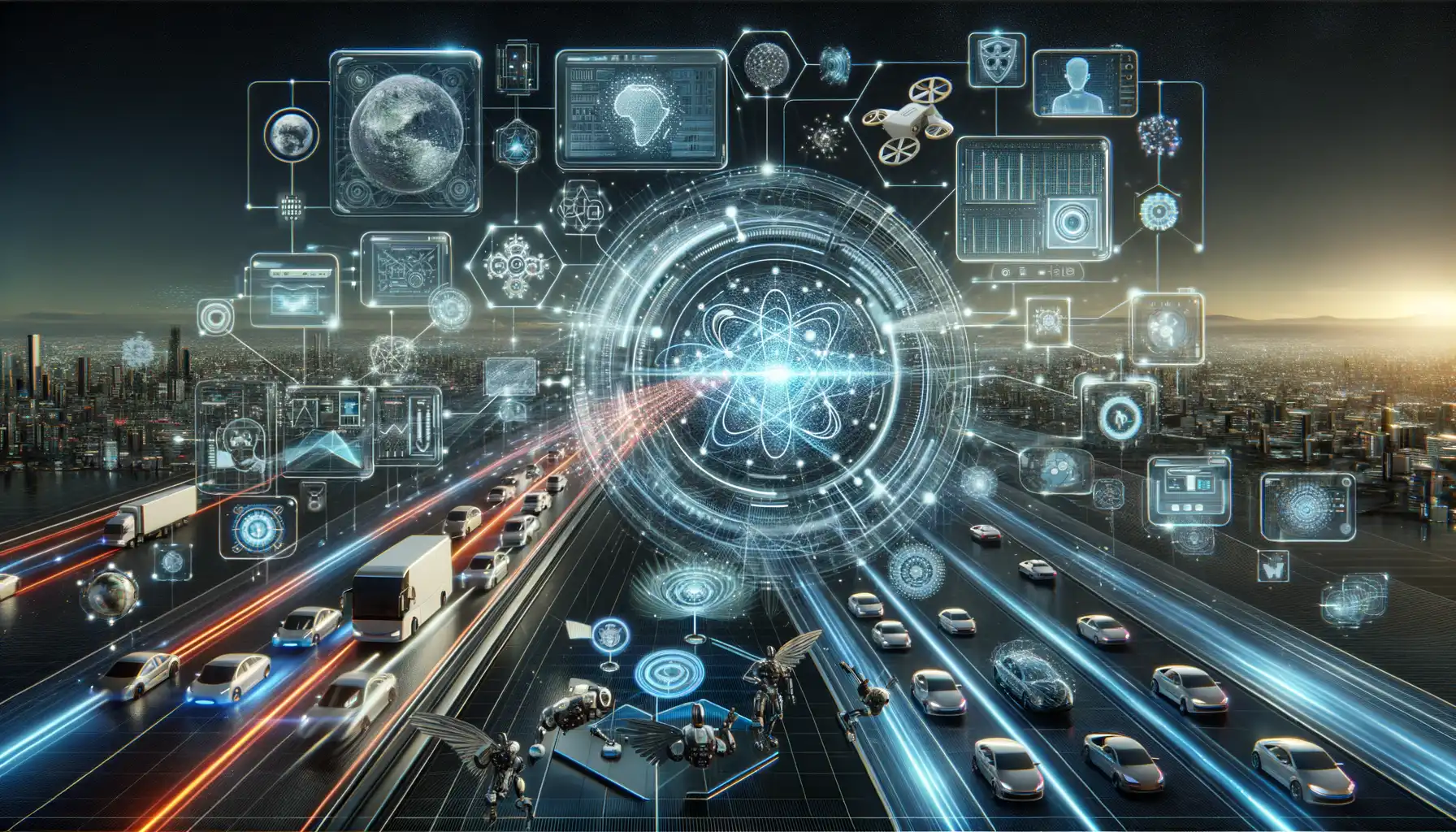Introduction to AI and IoT Integration
Unveiling the Fusion of AI and IoT
Imagine a world where your mobile app isn’t just smart—it’s intuitive, almost clairvoyant. That’s what happens when Artificial Intelligence (AI) meets the Internet of Things (IoT). It’s like pairing a master strategist with a troop of data-gathering scouts. Together, they create an ecosystem that’s not just reactive but proactive!
At its core, this integration transforms raw data into actionable insights. Think of an app that monitors your home security system. With just IoT, it alerts you when a door opens. But add AI? It learns your routine, notices anomalies, and even predicts potential risks. Suddenly, it’s not just a guard—it’s a protector.
- Personalized experiences: AI analyzes IoT data to deliver features tailored just for you.
- Smarter decisions: IoT provides the “what”; AI figures out the “why” and “what next.”
Why This Collaboration Feels Like Magic
The beauty lies in their synergy. IoT collects floods of data from your devices—your refrigerator, smartwatch, car, thermostat. Alone, it’s like a library without a librarian. Enter AI: the librarian who categorizes, interprets, and finds hidden patterns within those shelves of data.
Here’s a relatable example: imagine a fitness app using IoT to track your steps and heart rate. With AI, it doesn’t just record data; it knows you skip workouts on Wednesdays, predicts your weight loss trends, and even suggests ways to optimize results.
This partnership redefines convenience. Users don’t just interact with their apps—they build relationships with them. It’s intelligent technology that feels almost human, yet retains the precision only machines can achieve.
Benefits of Combining AI with IoT in Mobile Applications

Transforming Mobile Apps into Powerhouses of Intelligence
Imagine your mobile app not only understanding your actions but predicting your needs even before you realize them. That’s the magic you unlock when combining the analytical prowess of Artificial Intelligence (AI) with the interconnected brilliance of the Internet of Things (IoT). Together, they don’t just upgrade apps; they revolutionize them.
For instance, consider a fitness app linked to your smartwatch. With IoT gathering real-time heartbeat and movement data, and AI analyzing long-term patterns, your app can suggest tailored workouts, alert you if something’s off, or even schedule recovery days when it senses overexertion. This isn’t just functionality — it’s empathy in action.
- Hyper-Personalization: AI makes sense of IoT’s constant stream of data, turning numbers into insights that feel deeply personal.
- Proactive Experiences: Why should users ask? An AI-powered IoT app anticipates, like a trusted friend who brings you coffee just when you need it.
The Unsung Efficiency Hero
Let’s talk about speed and precision. By processing massive data from IoT devices on the fly, AI streamlines decision-making to near-instant levels. In logistics apps, this could mean tracking an entire fleet of vehicles in motion while dynamically adjusting routes based on traffic patterns — all handled silently in the background.
More so, think of energy management in smart homes. Your app knows when you’re home, your preferred temperature, and even your bedtime. AI fine-tunes all IoT devices to ensure comfort while saving energy. It’s efficiency and sustainability rolled into one.
Turns out, the real benefit might not just be smarter devices but a smarter, happier life.
Key Use Cases and Applications of AI and IoT in Mobile Apps

Transforming Everyday Life with AI and IoT in Mobile Apps
Imagine opening your smartphone, and instead of just passively responding, it’s actively anticipating your needs. That’s the magic when AI meets IoT. Together, they transform mobile apps into personalized wizards that predict, adapt, and react faster than you can say “technology revolution.”
Take smart homes, for instance. Your thermostat knows you love cozying up when it rains and adjusts itself before you even step inside. Pair this intelligence with an app, and suddenly, you’re managing your entire home with quick swipes and voice commands.
And what about fitness apps? They’ve gone from simple step counters to full-on health assistants. By combining IoT-enabled wearables with AI analysis, they monitor heart rates, detect irregularities, and provide tailored workout plans—all while syncing with your lifestyle.
- Retail apps: Picture walking into a store, and your app recommends discounts tailored just for you based on your past purchases and location.
- Automotive applications: Your car communicates with your phone’s app to ensure it’s refueled or charged when needed, saving you last-minute stress.
Now, that’s not just convenience—it’s redefining how we connect with our world!
Challenges in Implementing AI and IoT Technologies

The Invisible Hurdles: Where the Magic of AI and IoT Gets Complicated
Picture this: you’ve envisioned a mobile app that harnesses both the brainpower of Artificial Intelligence and the connectivity of the Internet of Things. It’s your pièce de résistance, ready to revolutionize user experiences. But then—bam! The roadblocks start piling up, like traffic on a rainy Monday morning.
One of the biggest stumbling blocks? Data overload. IoT devices are chatterboxes, constantly generating streams of data. But feeding all that raw information into an AI system feels like trying to drink from a firehose. Without proper filtering, structuring, and management, the system risks getting bogged down in the noise instead of extracting meaningful insights.
Then there’s the issue of compatibility. IoT ecosystems involve a patchwork of devices from different manufacturers—smartwatches, thermostats, even refrigerators. Getting them all to play nice and share data is like herding cats.
- Security and privacy concerns: When devices talk to each other, hackers might be eavesdropping, waiting to exploit vulnerabilities.
- High development costs: Merging AI algorithms with IoT infrastructure isn’t cheap—it’s like building a rocket on a family car budget.
Add to that the relentless demand for low latency. Users don’t have time for lag; they want instant, flawless interactions. And if your app doesn’t deliver? Swipe left, and it’s history.
Future Trends and Opportunities in AI and IoT Integration

The Cutting-Edge Frontier of AI and IoT
The future of AI and IoT integration is like standing on the edge of a technological galaxy—dazzling, boundless, and brimming with possibilities. Imagine your mobile app not just understanding your habits but predicting them so well it feels like a mind reader. That’s where we’re headed.
One major trend shaping the horizon? The marriage of AI-powered predictive analytics with IoT sensors. Devices will soon go from being reactive tools to proactive problem solvers. For instance, think of a smart thermostat that doesn’t just control temperature but learns your comfort zones based on your mood, energy consumption ethos, and even the weather forecast.
Another game-changer is the rise of personalized healthcare solutions. IoT wearables might soon diagnose early warning signs of health issues in real time using AI algorithms.
- Imagine a fitness tracker flagging irregular heart rhythms for your doctor before you even notice a symptom.
- Or a smart fridge suggesting healthier recipes based on your eating patterns—and maybe even syncing with your grocery app to restock automatically!
Opportunities for Innovation Like Never Before
The question isn’t “what can we do?” but “what can’t we do?” Innovations like edge computing are paving the way for faster, more secure data processing. Decentralizing AI models to the “edge” enables real-time decision-making while minimizing latency—a feature critical for self-driving cars or instant language translation apps.
Businesses too are diving in headfirst to harness this tech. Retailers are betting big on AI and IoT to reimagine shopping. Picture walking into a store with no checkout lines: AI tracks what you put in your cart while IoT-enabled cameras handle inventory tracking on the fly.
From autonomous drones delivering packages to intelligent agriculture systems boosting food production, the opportunities seem plucked straight out of science fiction. But here’s the kicker—this isn’t reserved for tech giants. Startups, small businesses, and innovative developers can carve out their niche in this ever-expanding universe of AI-fueled IoT magic.
